
Rujuta Diwekar is a celebrity trainer and nutritionist, whose celebrity clients include the likes of Kareena Kapoor, Preity Zinta. She is the one who helped Anil Ambani lose 108 kgs.
Myths and malpractices of exercise demystified: Rujuta Diwekar
Already, her countless fans swear by her books, and Rujuta Diwekar has made a niche for herself, helping people understand and embrace the idea of fitness, exercise and dieting. This Mumbai-based celebrity nutritionist has authored award winning books that offer a succinct, clear-headed view of how to get a healthy body without falling prey to extreme and sometimes dangerous fads.
In her new book, “Don’t Lose Out, Workout!” (Westland), she once again approaches this subject, with a fresh, new perspective, and even more information, advice and suggestions. She talks about various myths and malpractices about exercise (includes chapters on strength training, cardio and yoga along with pre and post workout meals).
“Exercise is the ‘in’ thing, gyms are cropping up in every nook and corner, roads are occupied by recreational runners and yoga schools have an enviable waiting list. But along this has grown the number of injuries and disillusionment at not getting results,” says Diwekar.
Here are some fitness and nutrition tips shared by Rujuta Diwekar:
- Diets (suggested by inexperienced nutritionists) which are supposed to make people you healthier and fitter, can make you weaker and older.
- You must know what exercise suits your body.
- Drink water regularly throughout the day, as it keeps body metabolism going. Reducing water intake to lose weight can be detrimental to the body
- More sweat doesn’t mean more calories burnt. Sweating is a cooling process that does not burn calories.
Weight training is more important than doing random work-outs. It makes the body a better fat burning machine, and prevents lifestyle disorders like diabetes. - The following are common myths – walking is the best exercise, running on the treadmill weakens the knee, doing ‘cardio’ is best for the joints and the legs, ‘crunches’ for flat stomach, and gymming makes you bulkier.
“Indians don’t care about the science behind exercise, and only worry about exercise when they get fat. In fact, it should be a part of our lives. Active is the new guideline, and sitting is the new smoking,” says Diwekar.
Watch:Indian Food Wisdom & The Art of Eating Right by Rujuta Diwekar
Excerpts from her interview:
What sparked off the idea?
“Don’t lose your mind, lose your weight” helped a lot of people get clarity about “dieting” and how one needs to be plain sensible with eating instead of being an extremist or starving. “Women and weight loss tamasha” addressed women specific issues and the fast spreading Hypothyroid and PCOD. But still the other side of the coin, exercise remained a grey area. Most e-mails I would receive, messages over Facebook/ Twitter, interactions with my clients and overhearing conversations at parties, gyms, coffee shops pointed to just one thing – exercise remains a misunderstood concept. Something, that people do when they get heart attacks or to get in shape to face the arc lights. Those in between felt it was like an optional chapter that they could skip, just like they did during the final exams. It is an honest attempt to educate the readers about the need to be physically active in daily lives and makes a strong case for investing 150 minutes a week into exercising. Working out has tremendous benefits, it remains an undervalued aspect of leading a fulfilling life and dying young at a ripe old age. I am thrilled to share that people are happy to discover that there is something called “exercise science” and that it can set them free from the boredom and monotony of gymming/ walking, etc. And it’s after this book that I have received most flattering e-mails from doctors, they really seem to like the book and I am so happy with that. Because if we have doctors, the people we trust the most with our health, recommending exercise (structured, scientific workout plans, not just “go for a walk”) over procedures and pills then we have overcome at least half the obesity epidemic that is staring at urban India’s face.
Could you tell us about the tone and language of the book, and why you write the way you do?
Well, you see I write like the way I talk and I talk too much, it doesn’t allow me to think about grammar, prose, sentences, only about impact. Moreover, I am a dietician so my intelligence is below average (to put it mildly), have almost never read in my life, not even newspaper headlines, so I write what I would like to listen to – stories, conversations, candid chats. Crossword store in Kolkata once told me that I have started a trend of “health books” with “real life examples”. I did it by default not design, it appealed to readers because it was real and not because it was “readable”. So I write the way I do because I am limited by intelligence and think of readers as intelligent people, with the insight to go beyond design, cover, marketing etc.
With so many countless theories, myths and beliefs about exercise, tell us about finding subjects and issues
Gosh! I hope that I have covered the most common ones at least. The thing about myths is that they exist because we don’t know better or think that exercise is an activity for the brain dead/ not driven academically students so it can’t possibly be a science. And then if a myth exists for a long time, it becomes a part of our belief system. For example – the myth of sweating leads to fat burning. Now it is only through understanding of basics of exercise physiology, bio-mechanics, ergonomics and nutrition that you can see that ultimately its optimum muscle fibre recruitment that leads to fat loss, and that sweating is only a means of thermo regulation. But to gain that clarity, you must first be confused. At least that’s what I hear spiritual masters say in Rishikesh, to not get frustrated by conflicting advice/ emotions and to know that clarity comes out of confusion, that’s also what Krishna said to Arjuna on the battle grounds of Kurukshetra.
Hopefully the book will help tackle every possible exercise fad/ myth around but the ones that are extensively covered are: Sweating leads to fat loss, running is bad for knees, 100 Suryanamaskars will make you thin, crunches will give you a flat stomach, gymming makes you bulky and walking is the best exercise
And a bit about your own schedule and juggling everything. Does it throw your routine off?
I met Anil Ambani in 2004 and I learnt that you can make time for everything if you plan in advance, and have been practising that at least for 10 years now. So if you ask me where I am holidaying, studying and the clients that I am meeting, we have everything planned or blocked in the calendar at least a year in advance. Also I am very fortunate to have clients who whole heartedly encourage my holiday/ conferences/ study trips and honestly I am mostly working with people who have a 10 year plan in place, so they have deep respect for my time as well as theirs. And as long as I stay on schedule, they remain indulgent; it’s really a lovely profession to be in.
What’s next?
Hopefully, a project for children. When kids are taught that they must eat carrots for vitamin A and vitamin A is for good vision, it breaks my heart. A heritage like ours, owes it to the gen-next to pass on the evolved oral food wisdom so that children eat (or not eat) out of deep sense of respect for their wellbeing, so that birthday parties are not hosted at junk food places. The three main myths that the book will cover are: How you don’t need to 1. drink milk for calcium, 2. eat dal for protein and 3.eat vegetables for vitamins.
Source: thehindu.com


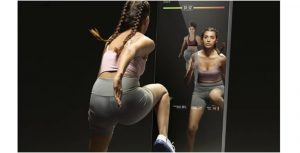

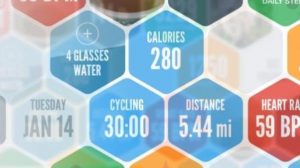
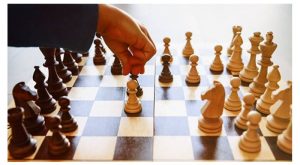
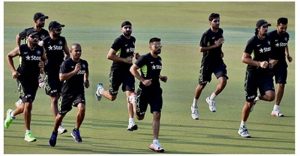
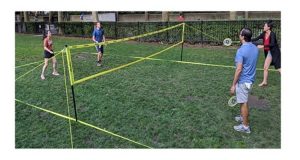

Leave a Reply